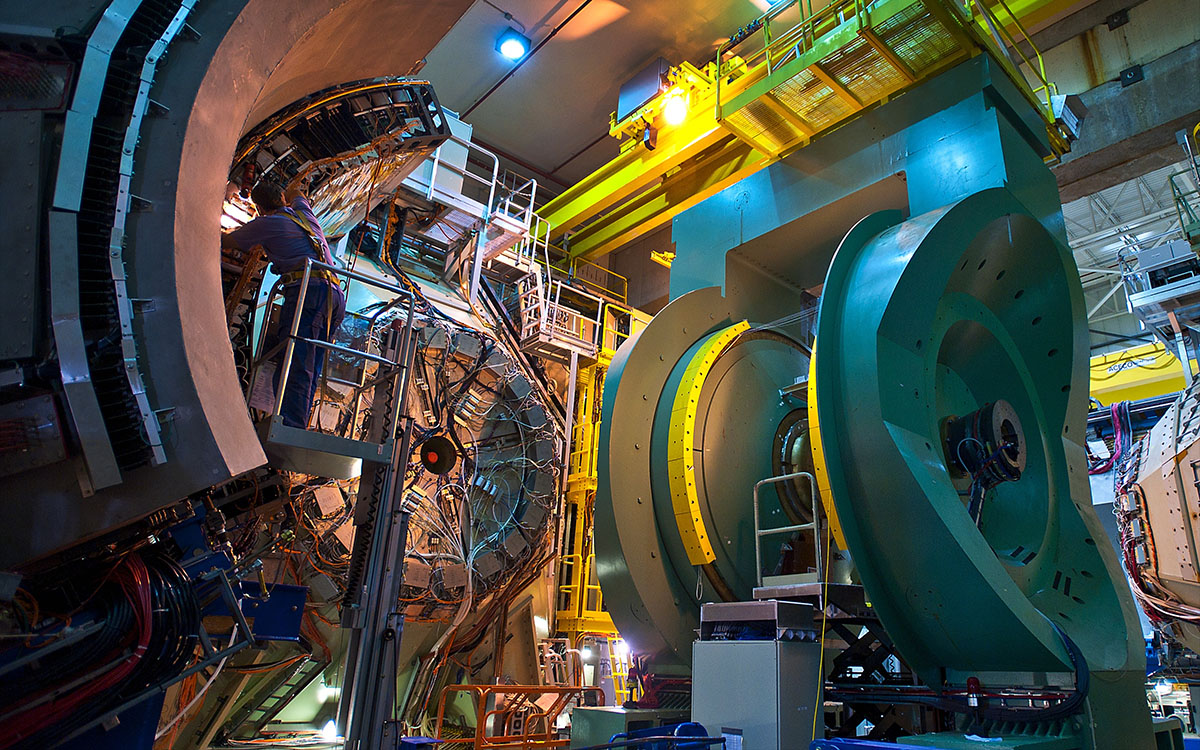supercollider? i just met her!

Despite the loud protests emanating from doomsday fear mongers, physicists and engineers built the Large Hadron Collider, the biggest and baddest atom smasher in existence. It hasn’t smashed any atoms yet since it’s still being repaired, and considering the energies involved in the planned impacts, we should probably let CERN take its sweet time in making sure that everything will work precisely as intended. But even though the detection chambers at the LHC won’t be exploring new frontiers of science for some time to come, scientists are already thinking about a new generation of colliders, ones that will viciously slam matter into antimatter.
Considering that matter/antimatter reactions are the most efficient method of energy production in the known universe, you can just imagine future headlines filled with apoplectic howls of people who imagined the LHC creating black holes panicking about the new doomsday machine. As I’ve written before, creating an artificial black hole on even a subatomic scale would take a lot more power than the LHC has and pose no threat to our planet, and the Compact Linear Collider design would operate at roughly the same energy levels. That means those of you getting ready to resurrect the black hole doomsday scare by replacing the LHC with CLIC in your panicked essays, can step away from the keyboard now.
However, there is a real point of concern for a machine that will routinely host matter/antimatter collisions and it should give the designers some pause. The powerful bursts of energy could destroy the CLIC by generating wakes in the fabric of time and space around the atoms traveling at relativistic speeds. When all those wakes combine in high energy environments, the stresses could turn the atom smashers into very expensive scrap. Mind you, there won’t be a huge, science fiction movie worthy blast that erases everything in a ten mile radius with a deafening roar heard for hundreds of miles in every direction. The delicate instruments in the detection chamber would simply fizzle out, rendering the machine useless in a very anticlimactic way.
Not to worry though, the problem of relativistic wakefields isn’t new and there are several collider designs that can dampen their effects. On top of that, there’s also a proposed detuning method which would interfere with the normal flow of the wakes to reduce their cumulative effects. Still, smashing matter and antimatter at over 99% the speed of light isn’t exactly a trivial task and the energies involved have to be carefully managed as not to overload the incredibly sensitive machines able to track and measure events lasting a billionth of a second and generating about as much energy as a mosquito flying into a screen door. Sure, these aren’t the kind of jaw dropping numbers you’d expect form machines that look like they could open a portal to another universe, but let’s be realistic. We’re talking about colliding objects measuring trillionths of a millimeter.





